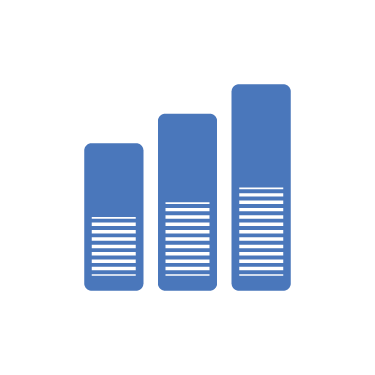Business customers of every size in every industry have been affected by the COVID-19 pandemic. And while no one knows what the economic future will look like, here are some things we can expect to be true:
- Businesses need help and are looking for opportunities and partnerships to help ensure their survival.
- Large business customers likely have more resources than their small and midsize business (SMB) counterparts do.
- Although account managers have strong relationships with important accounts, the nature of those relationships has shifted dramatically.
- SMB customers will continue to rely on digital channels to engage with you.
- All business customers need to cut energy costs, and they will look to you for trusted advice.
Get and give expert energy advice to business customers
To guide your business customers through the next phase of the pandemic, you need to know the details of their industry. The “Business Energy Advisor” is a library of industry-specific energy information and advice for dozens of business types and technologies. Figure 1 gives you an idea of what you’ll find in Business Energy Advisor.
Figure 1: What’s in a typical Business Energy Advisor article?
All utility employees can benefit from Business Energy Advisor content. But here’s how account managers, business customer support agents, and communications professionals can use it.
Account manager. Some of your business customers are reopening; others will be closed indefinitely. Use the “Quick fixes” and “Longer-term solutions” sections of the business-type pages to suggest ways for customers to save money now and after the pandemic. Copy and paste these recommendations into your email communications. Use the technologies articles to familiarize yourself with the equipment your business customers use and recommend ways to make that equipment more efficient. By setting up long-term energy-efficiency plans now, you can build relationships with your business customers so they’ll trust you when it comes time to put the plans into action.
Business support representative in the contact center. Keep Business Energy Advisor open on your computer while you field questions from customers over the phone or through email. See at a glance what changes business customers can make at their facilities to reduce costs now. Use the email-sharing button at the top of each page to send the information directly to customers.
Communications professional. Speak to your business customers in their language and show that you understand their operations. Take content directly from Business Energy Advisor and drop it into your emails, newsletters, and promotional materials. Use the social-sharing buttons at the top of each page to post the content on your utility’s Facebook, Twitter, and LinkedIn accounts.
Use business customer feedback to shape your postpandemic strategies
Every year, we do voice-of-the-customer market research through the E Source Business Customer Satisfaction Study. These surveys allow us to collect feedback from real utility business customers and identify areas where utilities aren’t meeting customers’ expectations. We use this data to update Business Energy Advisor so you can recommend actions based on current information.

COVID-19 reports based on E Source Gap and Priority Benchmark data
We recently published reports about how utilities can use Gap and Priority Benchmark data to serve grocery stores, restaurants, offices, and healthcare facilities during the coronavirus outbreak. Click the account manager tab in our “COVID-19 resource center” to access them.
Data from the 2019 Gap and Priority Benchmarks show that utilities have some ground to cover when it comes to meeting business customers’ expectations in certain areas. And we can only assume that customers’ satisfaction with their utility has decreased since the coronavirus outbreak.
Below are gap analyses for large and SMB customers (figure 2). We calculated the gaps by subtracting the rating customers gave for the importance of a utility attribute from the rating they gave for how well their utility was performing on that attribute. A gap of –1.0 or greater indicates an area of concern, and a utility should make it a priority to address the disparity.
Figure 2: Gaps in business customer performance
A. Large business customer utility gaps
B. SMB customer utility gaps
We want to help you help your customers. To learn more about this tool and how you can use it to guide your business customers and help them reduce costs, set up a brief demo and we’ll walk you through it.


